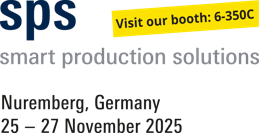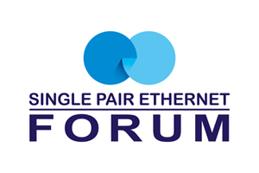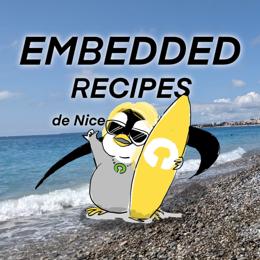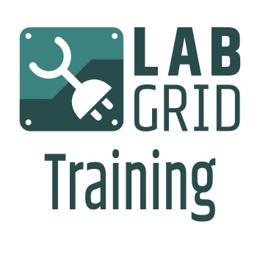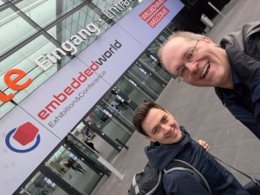GStreamer Conference 2025
This years GStreamer conference was held at the end of Oktober in London, UK. Since GStreamer is our goto-framework for multimedia applications, Michael Olbrich and me were attending this years conference to find out what's new in GStreamer and get in touch with the community.
The conference took place in the Barbican Centre, a performing arts centre within the brutalist buiding complex of the Barbican. This location alone is worth a visit and provides a nice setting for a conference. Having the hallways track and coffee and lunch breaks in the conservatory at Level 4 adds an extra touch.
The GStreamer State of the Union talk by Tim-Philipp Müller kicked off the conference. There should be the GStreamer release 1.28 by the end of this year. Overall, Rust is still a large and growing area in GStreamer. The mentioning of the reduced binary size of the Rust plugins caused some murmuring in the audience. Furthermore, there are also new bindings for C++ and Go to improve the use of GStreamer in C++ and Go applications. During the conference, there were further talks on the state of certain development areas, for example on the Video4Linux ecosystem.
Since I am interested in video encoding and decoding, the talks about Tools to profile a video encoder, soothe: a proposal for encoder testing and Virtual Hardware: Emulating a Video4linux Hardware Decoder grabbed my attention. Furthermore, the talk about Region-Based Compression in GStreamer shows how region-of-interest can influence the video quality and bit rate of sports broadcasting. In the broadcast of a football game, the audience is responsible for most of the bits in the video stream.
For anyone who is hunting bugs in a GStreamer application, Nicolas gave an introduction into The Art of Debugging GStreamer Software. He started from a very vage bug report, showed how to reproduce and isolate the bug, and ended with a fix in the kernel that caused the problems in GStreamer. There was a quick shoutout to AI as a tool during debugging, but a warning that the AI should not be trusted. One always needs to consult the specification to be sure. How to deal with AI is still an open issue in GStreamer. A discussion between developers followed, about their debugging approaches and pain points when debugging GStreamer. Another interesting talk on debugging and analysis was Showing the invisible: Analysing buffer flow with tracers about a few new tracers to investigate performance issues.
Practical examples in measuring and addressing GStreamer performance were given in Cutting audio latency with bidirectional WebRTC and Improving WebRTC datachannel performance. In both talks the speakers demonstrated how they measured the performance of their pipeline to identify and finally fix bottlenecks and misbehavior in their GStreamer based systems.
There were also talks that went into a technical deep-dive. State of MPEG-TS in GStreamer goes into the history of MPEG-TS, differences between the specification and current implementations, and the implementation of new GStreamer elements. PipeWire’s pipeline operation vs GStreamer’s explained discusses the differences between the scheduling in PipeWire and GStreamer. This is especially interesting for anyone using both systems together, because the real-time scheduling of PipeWire needs to be considered when connecting GStreamer and PipeWire pipelines.
As an example for GStreamer in real-world applications, Laertes showed how they use GStreamer in medical training in GStreamer in the Medical Simulation Environment. GStreamer in VR devices manufacturing presents how GStreamer is used to test and calibrate the Meta Quest VR headsets.
Analytics and AI were also a topic at the conference but not quite as hyped as in the last few years. From Streams to Insights: Advancing GstAnalytics shows how GSTAnalytics makes the integration and negotiation of tensor formats in GStreamer pipelines more seamless and flexible. Audio source separation using snakes, crabs and torches presents how to use the demucs plugin to remove the voice from audio files in an karaoke applications.
On the weekend after the conference, we and many other attendees of the conference stayed in London for the GStreamer hackfest, to experiment with newly found GStreamer plugins and technology or continue their existing projects with the experts at hand.
Further Readings
Pengutronix at SPS in Nuremberg
After some years of absence, Pengutronix is back at the SPS 2025 in Nuremberg. You will find us in hall 6, booth 6-350C. We are looking forward to connecting with old and new friends, partners and customers. As usual, we will be showcasing demonstrators on current topics at our exhibition stand.
Pengutronix at the Single Pair Ethernet Forum in Ludwigsburg
Single Pair Ethernet (SPE) is a set of new Ethernet standards in which communication works over a single pair of wires. Embedded Linux is ideally suited, especially for the smallest nodes connected via SPE. Pengutronix is a partner of this year's Single Pair Ethernet Forum in Ludwigsburg and will also be giving a presentation.
Talks, Workshops, Time at the Beach - Embedded Recipes 2025
I was part of a small delegation of Pengutronixians at the Embedded Recipes conference this year in Nice, France. We had a great time there, so let's take a look back at the great talks we have seen, the labgrid workshop we held and our time in Nice in general.
Labgrid Hands-On Training at Embedded Recipes 2025
We are happy to announce that we are hosting a one-day version of our hands-on labgrid training at the Embedded Recipes in Nice, France. The workshop takes place on day three of the Embedded Recipes (16.05.2025) and is part of the workshop track. The workshop is free of charge, but registration is required.
Looking back at Embedded World 2025
An exciting week is over: Embedded World 2025 in Nuremberg! We had lots of interesting talks with our visitors and other exhitibors, and for me the most important result was: connected embedded Linux devices won't be possible anymore without a good maintenance strategy for the kernel, without secureboot and a solid updating concept, taken that companies have to fulfill the european regulations of the cyber resilience act!
Pengutronix at Electronica 2024 in Munich
Electronica trade fair in Munich, Germany is just around the corner and Pengutronix is currently gearing up to showcase some of our latest topics and developments. You find us in Hall B4 Booth 102 (map).
What's new in Weston 13?
Last Tuesday, Weston 13.0 has been released. The release contains several new features that have been developed and mainlined for our embedded systems' use cases. In this blog post, we would like to explain the new features relevant for us — multi-backend, OpenGL renderer for the PipeWire and VNC backends and overlapping outputs — and outline why those are important for embedded usecases.




